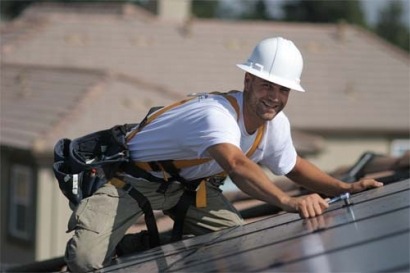
The demand for PV projects in the United States has been rapidly expanding over recent years as a result of falling module prices, stimulus funding and new regulatory incentives from congress. However, recent happenings, both political and commercial, have formed a dark cloud over the future of the PV market in the country.
In 2009, US President Barack Obama launched the American Recovery and Reinvestment Act, which included more than $70 billion in direct spending and tax credits for clean energy. However, increasing pessimism surrounding the US economy has put into question the future of renewables in a country more concerned with ridding itself of its national debt. Furthermore, the recent bankruptcy of American manufacturer Solyndra, and the subsequent FBI investigation into their misuse of federal loans, has created a climate of mistrust towards renewables.
However, despite this cynicism surrounding renewable energy, experts at PV Insider have been conducting research that suggests PV installations will continue to increase in the country. In a recent interview Lori Mitchell of the San Francisco Public Utilities Commission described PV as a “fast growing industry” in North America, but acknowledged that “cost and available capital” remain a challenge.
This view was backed up by David Fernandez, Senior Vice President at Fotowatio Renewable Ventures, in a presentation given at last year’s PV Yield Optimization Conference. Fernandez argued that “the US is a very cost driven market, more so than Europe because it has not seen the feed-in tariffs that were in place in countries like Spain”. Showing support for photovoltaics, Fernandez explained that “five years ago the US had the fourth largest capacity of installed wind power in the world, and within two years the US saw substantial growth and now has the largest installed capacity, I have no doubts the same will happen in PV”.
The ease of installation and ability to meet RPS requirements, as well as a proven track record of operational plants, remain a key advantage behind plants either planned or under-construction. Fernandez summarized by saying the industry “needs to focus on three areas – efficiency, innovation and standardization; and as a whole adapt to the US market and learn from experiences around the world to drive PV forward”.
The US Treasuries grant will expire at the end of this year, however, PV costs have continued to decline as the technology becomes more efficient and the industry itself expands. In 2010 the installation costs of large-scale projects fell more than 20%, a clear indication that PV is taking important steps towards achieving financial independence and competing in a free market if subsidies end.
To address this further, the industry will meet in San Jose on 17-18 November at the 2nd Utility Scale PV Plant Optimization Summit, to discuss the latest improvements for plant design, engineering and operational strategies that are taking steps to achieving grid parity - the point at which photovoltaic electricity will compete without subsidies with electricity generated from coal, natural gas or nuclear energy.
In the lead up to the conference PV-Insider are giving free access to the presentation given by David Fernandez at last year’s event, which focuses on PV Plant Performance Lessons from the USA & Europe. To listen to this presentation in full, and to learn more about this year’s conference, click here.
For additional information:

